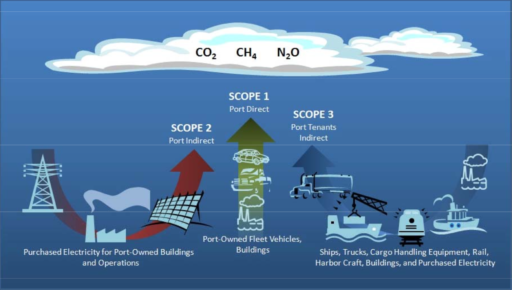One of the primary goals of the International Association of Ports and Harbors (IAPH) World Port Climate Initiative (WPCI) has been to establish a framework for Carbon footprint inventory and management. Responding to this the dedicated IAPH WPCI Carbon Footprinting Work Group was formed. The group was led by the Port of Los Angeles and brought together experts from the Port of Amsterdam, Port of Antwerp, Finnish Port Association, International Association of Ports and Harbors, Port of Houston Authority, Port of Long Beach, Port Authority of New York/New Jersey, Port of Oakland, Port of Oslo, Port of Rotterdam Authority and Port of Seattle. In 2010, the group released its Guidance Document on Carbon Footprinting that serves as a reference since for ports worldwide who are looking to develop or improve their GHG emissions inventories.
Carbon footprinting is used to determine emissions sources, track emission trends, and provide information needed to determine where ports can focus efforts to reduce their greenhouse gas (GHG) emissions. A carbon footprint is the amount of GHG emissions an individual, organization or event directly or indirectly releases over a measured period. Whether ports choose to monitor emissions associated with their landside operations or to extend their boundary to monitor emissions of ships and other equipment outside of their immediate boundaries, development of a carbon footprint serves as a valuable tool to identify GHG emissions. From there, a carbon management strategy can be created and implemented to reduce port GHG emissions.
